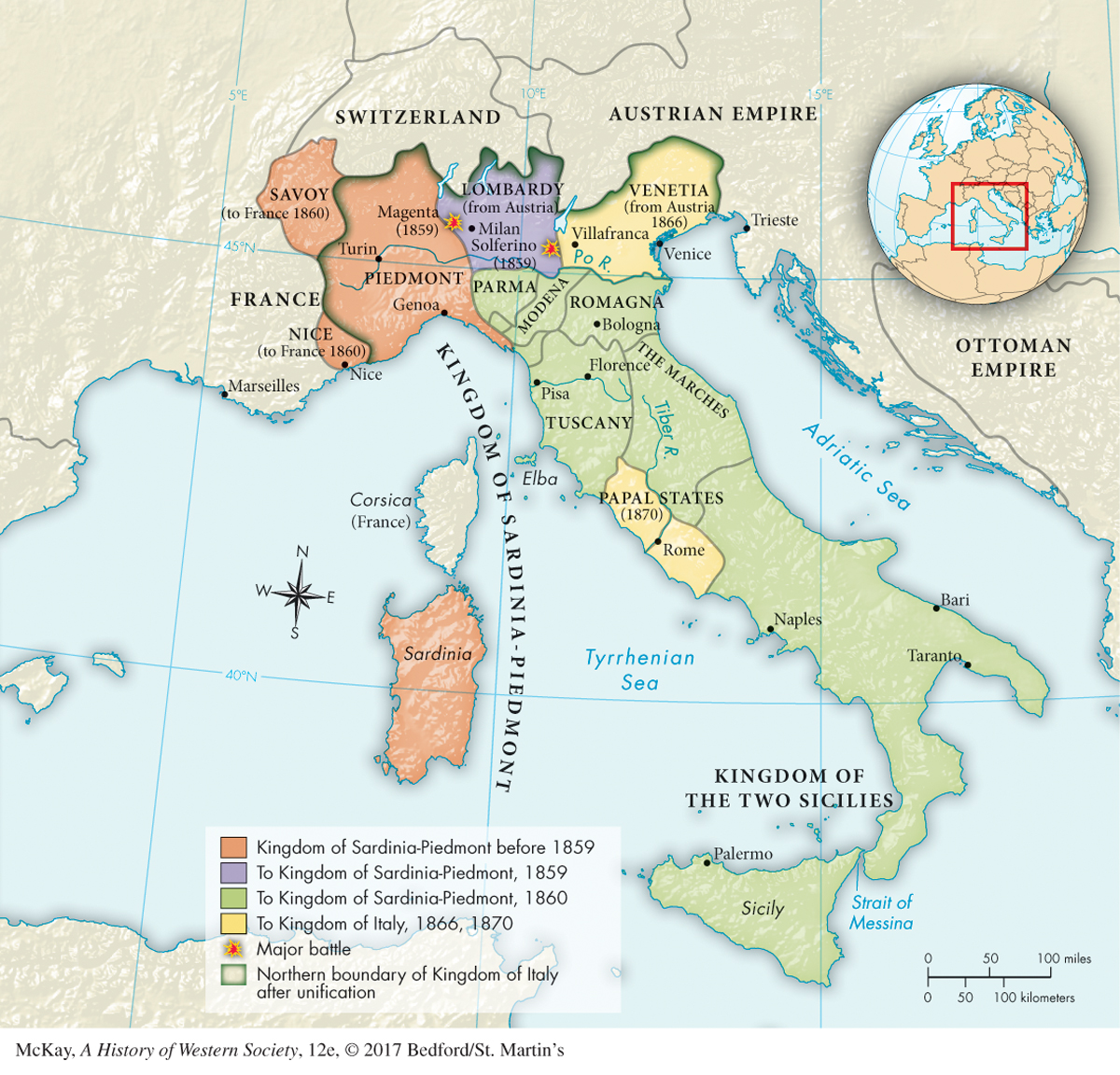A History of Western Society: Printed Page 758
A History of Western Society, Value Edition: Printed Page 726
A History of Western Society, Concise Edition: Printed Page 757
Italy to 1850
Before 1850 Italy had never been united. The Italian peninsula was divided in the Middle Ages into competing city-

Between 1815 and 1848 the goal of a unified Italian nation captured the imaginations of many Italians. There were three basic approaches. First, the radical and idealistic patriot Giuseppe Mazzini called for a centralized democratic republic based on universal male suffrage and the will of the people. (See “Evaluating the Evidence 23.1: The Struggle for the Italian Nation.”) Second, Vincenzo Gioberti, a Catholic priest, sought a federation of existing states under the presidency of a progressive pope. The third approach centered on Victor Emmanuel II, the autocratic king of Sardinia-
The third alternative was strengthened by the failures of 1848, when Austria smashed Mazzini’s republicanism. Victor Emmanuel II, crowned in 1849, retained the liberal constitution granted by his father under duress the previous year. This constitution combined a strong monarchy with a fair degree of civil liberties and parliamentary government, though deputies were elected by a limited franchise based on income. To some of the Italian middle classes, the Kingdom of Sardinia-
As for the papacy, the initial cautious support for unification under Pope Pius IX (pontificate 1846–1878) had given way to hostility after he was temporarily driven from Rome during the upheavals of 1848. For a long generation, the papacy opposed not only national unification but also most modern trends. In 1864 in the Syllabus of Errors, Pius IX denounced rationalism, socialism, separation of church and state, and religious liberty. The Catholic Church would be a bulwark against liberalism and progressive reform for the next two decades.